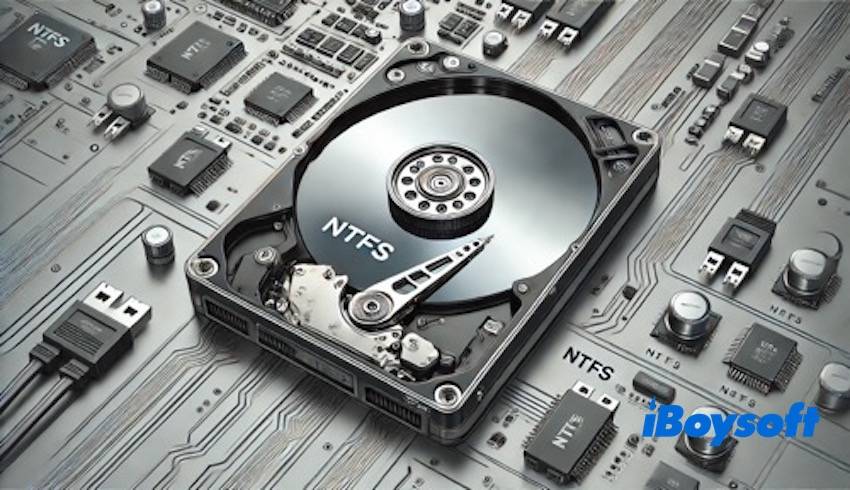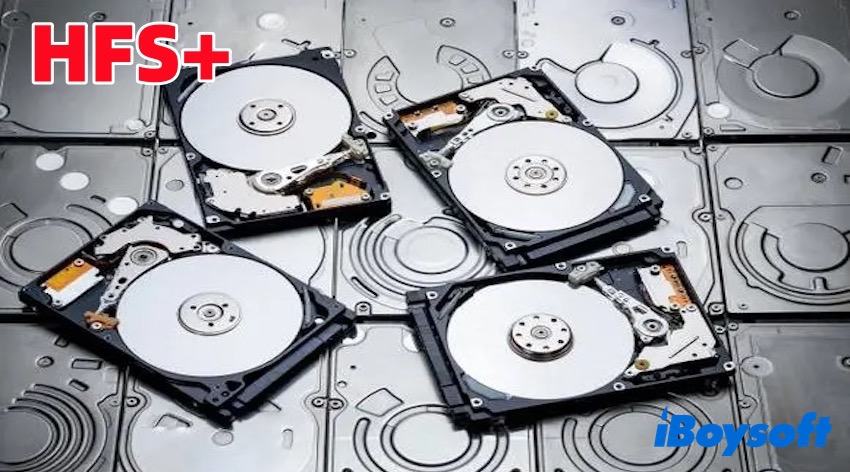Proprietary file systems are designed for specific tasks or industry needs, making them particularly suited to certain operating systems or hardware environments.
If you're not familiar with the term "proprietary file systems," don't worry—by the end of this article, you'll discover how prevalent these systems are in our daily lives.
What are proprietary file systems?
If proprietary file formats define how files are stored and presented, then proprietary file systems are responsible for managing how those files are organized and read on storage devices. For example, the NTFS file system in the Windows operating system can not only effectively store.docx files but also manage file permissions and compression functions.
Unlike open-source file systems, proprietary file systems are file systems that are owned and controlled by a specific company or organization. These file systems are typically developed for use in a specific operating system, device, or ecosystem, and their design and implementation details are not public.
In daily life, proprietary file systems and open-source file systems each have their unique advantages and applications. If you're not sure how they differ, keep reading.
If you find this article insightful and valuable, share it with others.
Proprietary file system vs. open source file system
Here's a four-way comparative analysis of proprietary and open-source file systems to help you gain insight into the significant differences and uniqueness between them.
Definition and Licensing
Proprietary file systems are usually developed and controlled by a single company, such as NTFS for Windows, and are used under a license agreement.
The developer community jointly maintains open-source file systems, like the Ext4 commonly used in Linux systems, and the source code is open for everyone to use and modify for free.
Control and Development
Updates and new features of proprietary file systems are entirely at the company's discretion, making it difficult for outside developers to participate.
Open source file systems are where everyone contributes code together, and systems like Btrfs are fast to update and feature-rich.
Scalability and Flexibility
Proprietary file systems are not easily modified on demand, such as macOS APFS, and can only be modified according to Apple's rules.
The open-source file system can be customized at will, has high flexibility, and can adapt to various use scenarios.
Security and Support
The security of a proprietary file system depends on the capabilities of the development company, and there is usually a fee for support services.
The open-source file system code is public, everyone can check whether it is safe, encounter problems, and get support from the community and some commercial companies.
Examples-What are the common proprietary file systems?
Proprietary file systems are designed to work seamlessly within specific environments, providing enhanced functionality and security tailored to their developers' needs. Below are some of the most well-known examples of proprietary file systems:
NTFS (New Technology File System)
NTFS, a proprietary file system developed by Microsoft, is primarily used in Windows operating systems. It supports large files and volumes, offering features such as file compression, encryption, and advanced permissions.
NTFS is designed for high performance and reliability, with capabilities like journaling to protect against data corruption and support for up to 16 exabytes of storage.
APFS (Apple File System)
APFS is Apple's proprietary file system, introduced with macOS High Sierra and now used across all Apple devices, including iOS, watchOS, and tvOS.
APFS is optimized for flash and solid-state drives (SSDs), offering features like cloning, snapshots, and strong encryption. Its design ensures faster and more efficient performance, particularly for devices with flash storage.
exFAT (Extended File Allocation Table)
exFAT is a proprietary file system developed by Microsoft designed specifically for flash drives and external storage devices. It bridges the gap between the older FAT32 and more advanced NTFS file systems, offering support for larger files (over 4GB) and higher storage capacities.
exFAT is widely used for its compatibility across different operating systems, including Windows and macOS, making it a popular choice for USB drives, SD cards, and other portable storage media.
HFS+ (Hierarchical File System Plus)
HFS+ (Hierarchical File System Plus) is a disk file system utilized by Apple for its Mac computers (including other devices running Mac OS) and digital music players like the iPod.

It was widely used in macOS for many years and is still supported on older devices. HFS+ supports journaling, which helps protect the file system against corruption and can handle large file sizes, making it a reliable choice for traditional hard drives.
Of course, you need to know that proprietary file systems vary in compatibility. NTFS works best on Windows, with limited macOS and Linux support requiring third-party tools. APFS is optimized for Apple devices but needs third-party solutions on Windows and Linux. exFAT is widely compatible across all major platforms and devices. HFS+ is mainly for macOS, with limited use on other systems through third-party tools.
Spread this post to others and inform them about proprietary file systems.
